Whisky aficionados may wax lyrical about the peaty lochs of Scotland or the rolling green hills of Ireland, but there’s a new chapter being written in the annals of whisky history, and it hails from the Land of the Rising Sun. Japanese whisky, with its enigmatic allure, has quietly ascended the ranks of the spirit world, earning its place on the top shelves of bars and in the hearts of connoisseurs.
But what exactly is Japanese whisky, and how does it distinguish itself from its Western forebears? Join us as we pour one up, and drink in the subtleties and nuances of Japanese whisky until we can no longer type coherently…
What Is Japanese Whisky?
Japanese whisky, spelt without the ‘e’ as is customary in Scotland, is a style of whisky developed and produced in Japan. Its origins date back to the early 20th century, when Masataka Taketsuru, known as the father of Japanese whisky, travelled to Scotland to learn the art of whisky making. Upon his return, he combined Scottish techniques with Japan’s meticulous approach to craftsmanship, giving birth to a new category of whisky.
Japanese whiskies are known for their elegance, balance, and subtlety. They often possess a refined smoothness, with a complexity that can range from floral and fruity to peaty and smoky, depending on the distillery’s location and production methods. The water used in the production, often sourced from Japan’s pristine natural springs, is said to contribute to the whisky’s distinct character.
How Does Japanese Whisky Differ From The Scottish Stuff?
While Japanese whisky owes much of its heritage and techniques to Scottish whisky, there are several factors that set it apart, creating a distinct profile that has garnered international acclaim. Let’s explore the differences that distinguish Japanese whisky from its Scottish ancestor.
Climate Variation
One of the most significant factors influencing the maturation of whisky is climate. Scotland’s cool, damp environment allows for a slow and steady maturation process, often resulting in a whisky that can be aged for decades.
In contrast, Japan’s climate varies dramatically from the northern island of Hokkaido to the southern prefectures of Kyushu and Okinawa. This range can include sub-zero winters to humid, subtropical summers. The generally warmer and more varied climate of Japan leads to a faster maturation rate, meaning Japanese whiskies can often achieve a similar complexity and depth of flavour in a shorter period of time.
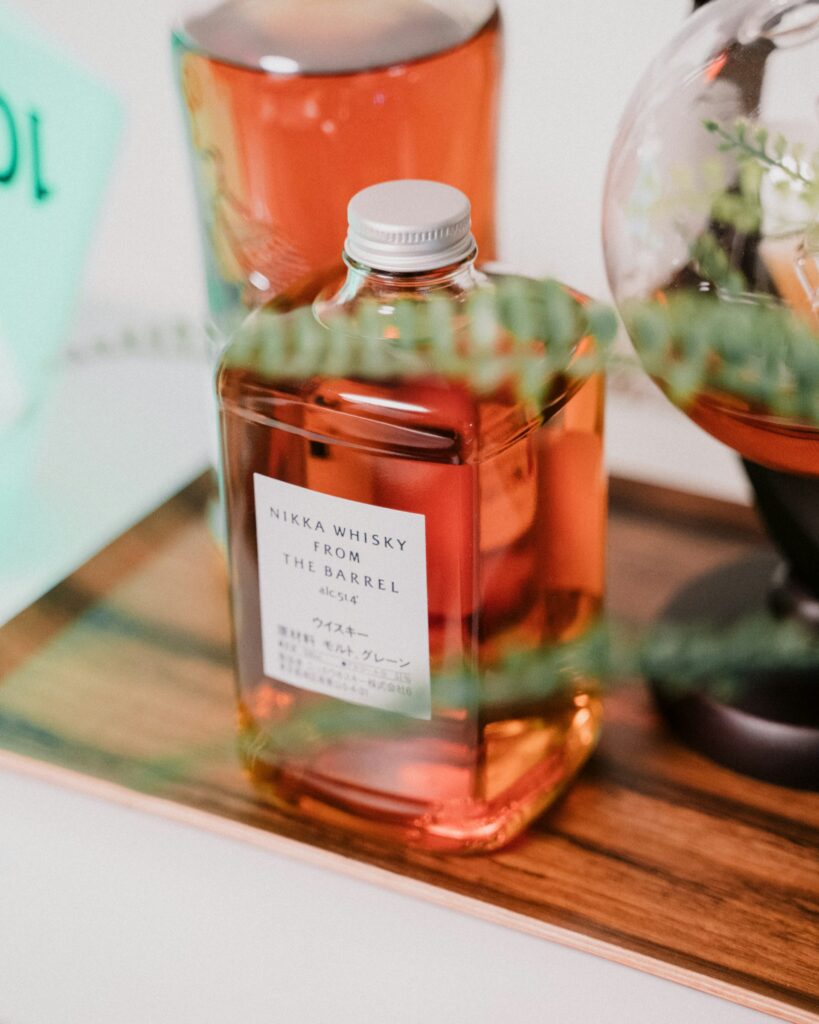
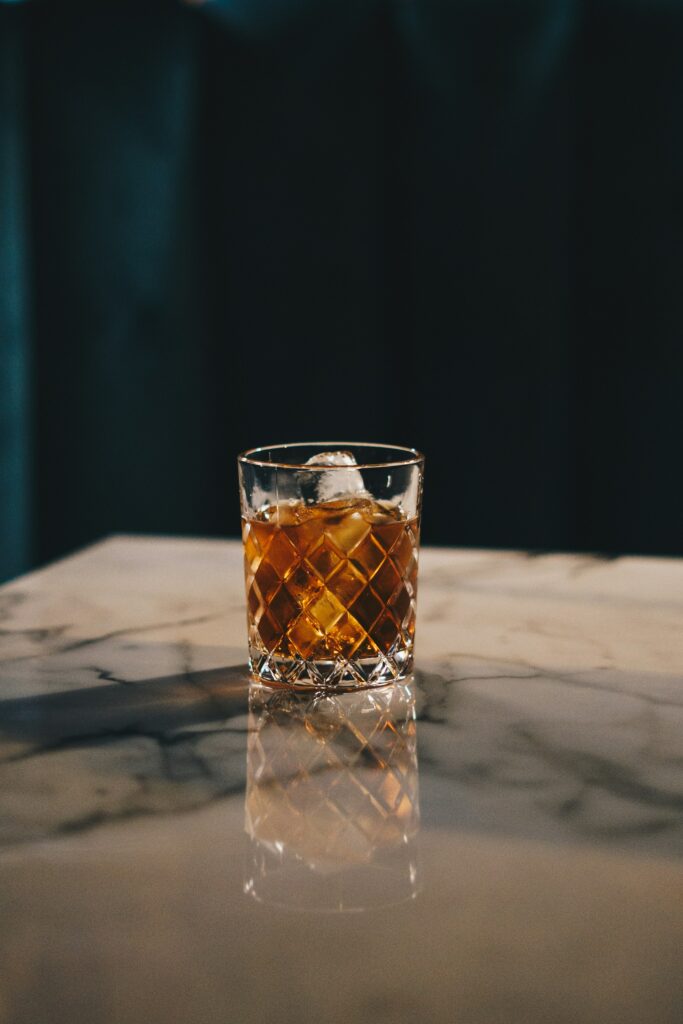
Distillery Practices
Scottish distilleries are often characterised by their adherence to regional styles and traditions, such as the peaty whiskies of Islay or the light, floral notes of Speyside. Japanese distilleries, on the other hand, tend to produce a wider range of styles within a single distillery.
This versatility is partly due to the Japanese approach to craftsmanship, where the goal is to perfect a variety of techniques and create a complex, balanced blend. Japanese distillers are known for their meticulous attention to detail, from the selection of barley and yeast strains to the precise control of the distillation process.
Barrel Influence
Both Scottish and Japanese whiskies are aged in oak barrels, but the choice of barrels can differ greatly. Scottish whisky often uses barrels that have previously held bourbon or sherry, which impart distinct flavours. Japanese distillers also use these types of barrels but have been known to experiment with local types of wood, such as Mizunara oak.
Mizunara imparts unique flavours to the whisky, including subtle hints of sandalwood and incense. The scarcity and difficulty in working with Mizunara oak add to the exclusivity and distinctiveness of the whiskies aged in these barrels, as well as adding to their price, we should add.
Blending Philosophy
Blending is an art form in both Scottish and Japanese whisky production, but the philosophy behind it can differ. In Scotland, blends are typically made from whiskies produced at different distilleries. In Japan, however, a single distillery will often create a blend from its own range of different malt and grain whiskies.
This self-sufficiency allows Japanese distilleries to have complete control over the blending process, resulting in a highly curated final product that reflects the distillery’s unique vision and style.

Cultural Nuances
Finally, the cultural context in which whisky is produced and consumed influences its character. Scottish whisky is steeped in centuries of tradition, with each region’s history and heritage playing a role in its production. Japanese whisky, while younger in its history and considered something of a ‘world whisky’, is deeply rooted in the Japanese ethos of harmony and perfection.
The Japanese approach to whisky making is not just about replicating Scottish methods but about infusing the spirit with the essence of Japanese culture, from the serene natural environment to the precise and respectful way of life.
Japan Spirits & Liqueurs Makers Association Guidelines
Japan introduced new labelling standards for Japanese whisky to ensure authenticity and transparency, which came into effect on April 1, 2021. These standards were established by the Japan Spirits & Liqueurs Makers Association. To be labeled as ‘Japanese whisky’, the product must comply with the following guidelines:
Raw Ingredients: The whisky must be made from malted grains; however, other cereal grains can also be used. The water used in production must be sourced from Japan.
Fermentation: The whisky must be fermented and distilled in Japan. The saccharification, fermentation, and distillation process must take place at a Japanese distillery.
Distillation: The alcohol content at the time of distillation must be less than 95%. This is to ensure that the final product retains the flavour of the raw ingredients.
Ageing: The whisky must be aged in wooden casks with a maximum capacity of 700 liters for a minimum of three years in Japan.
Bottling: The whisky must be bottled in Japan, with a minimum alcoholic strength of 40% as of the time of bottling.
No Additives: Apart from water and caramel coloring (E150a), no other additives are allowed. It should be noted that E150a is used to ensure color consistency across different batches of whisky. The natural colour of whisky can vary greatly depending on factors such as the type of cask used for aging and the length of time the whisky was aged. Since consumers often expect a consistent appearance in the products they purchase, some whisky producers use caramel coloring to standardize the color. It’s also used in the production of Scottish whisky.
How Do You Drink Japanese Whisky?
The beauty of Japanese whisky lies in its versatility. There is no single ‘correct’ way to enjoy it, but rather a spectrum of methods that can be tailored to personal preference and occasion. Here are a few traditional ways to savour Japanese whisky:
Neat
For the purist, drinking whisky neat is the ultimate way to appreciate the spirit’s true flavour. A small, tulip-shaped glass is ideal for concentrating the aromas and allowing you to take in the full bouquet of the whisky.
With Water
Adding a few drops of water to your whisky can open up new flavours and aromas, making it a smoother experience. The water should be soft, preferably still, and at room temperature to avoid altering the whisky’s inherent qualities.
On the Rocks
Enjoying whisky over ice is a popular choice, particularly in Japan’s warmer months. The ice chills the whisky, slightly muting the alcohol’s bite and allowing for a refreshing and mellow sip.
Mizuwari
The Mizuwari, meaning ‘mixed with water’, is a longer drink where whisky is combined with chilled water in a ratio that suits your taste, typically starting at about one part whisky to two parts water. This method is favoured for its ability to make the whisky more approachable without sacrificing flavour.
Highball
The whisky highball, a mix of whisky and carbonated water over ice, has become synonymous with Japanese drinking culture. It’s a light, effervescent beverage that pairs wonderfully with food and can be enjoyed throughout a meal, and is one of the world’s most classic whisky cocktails.
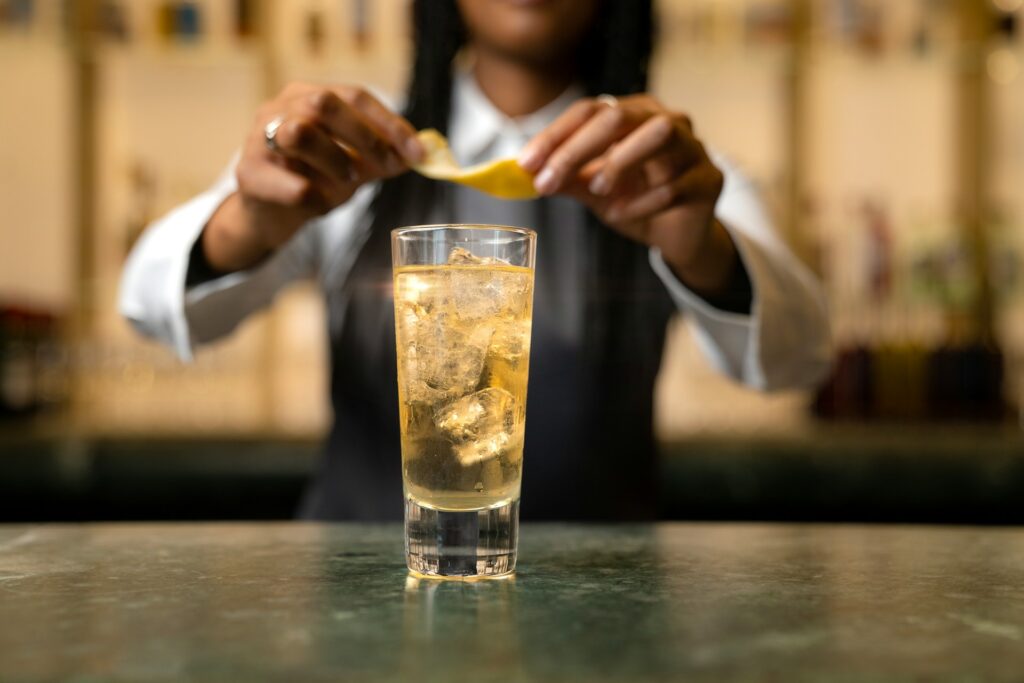
What Do You Serve With Japanese Whisky?
Pairing food with Japanese whisky is an art in itself, with the aim of either complementing or contrasting the flavours of the whisky.
Here are some pairing suggestions:
Tempura
Ideal with Hakushu 12 Year Old, Nikka Coffey Grain and Chita Single Grain…
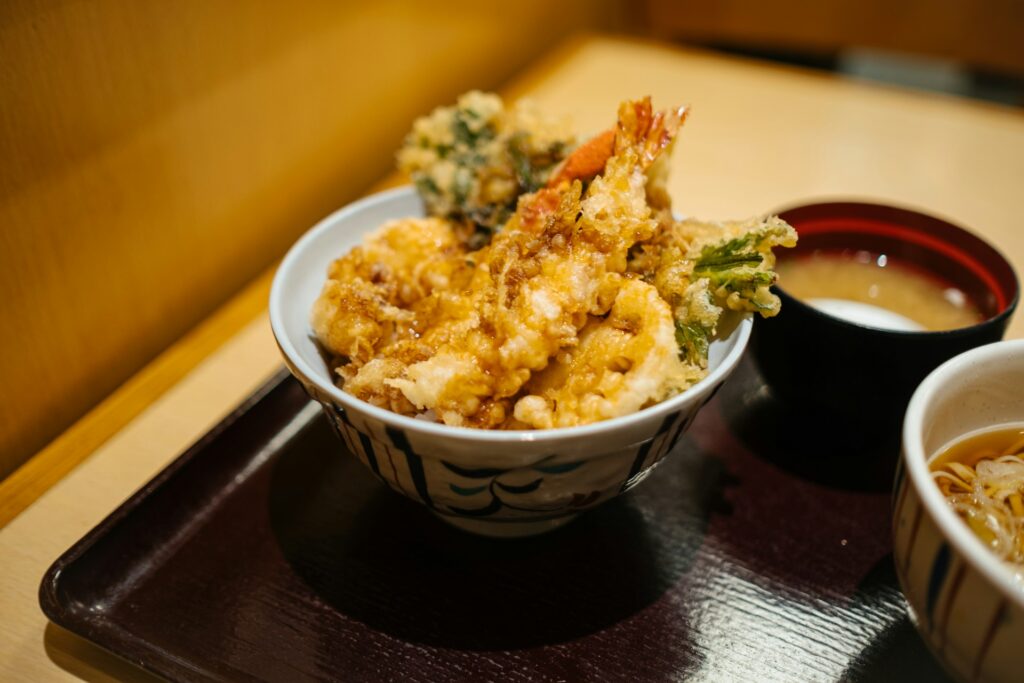
The light batter and the subtle flavours of tempura can be enhanced by the smoothness of Japanese whisky. When pairing whisky with tempura, consider serving the whisky with a few drops of water or a cube of ice to open up the flavours and reduce the alcohol intensity, which can otherwise overwhelm the food.
- Hakushu 12 Year Old: This single malt whisky from Suntory has a fresh and herbal character with some fruity notes, which can provide a refreshing contrast to the richness of tempura, especially if you’re enjoying tempura with a variety of vegetables.
- Nikka Coffey Grain: This whisky is made mostly from corn using a Coffey still, which gives it a sweeter and more bourbon-like profile. Its vanilla and tropical fruit notes can pair nicely with the light batter and sweet dipping sauce often served with tempura.
- Chita Single Grain: If you prefer a lighter whisky, Chita is a good choice. It’s a single grain whisky from Suntory that is known for its mild and smooth character with hints of honey and cardamom. It won’t overpower the delicate flavours of tempura.
Seafood
Ideal with Miyagikyo Single Malt and Chichibu On The Way…
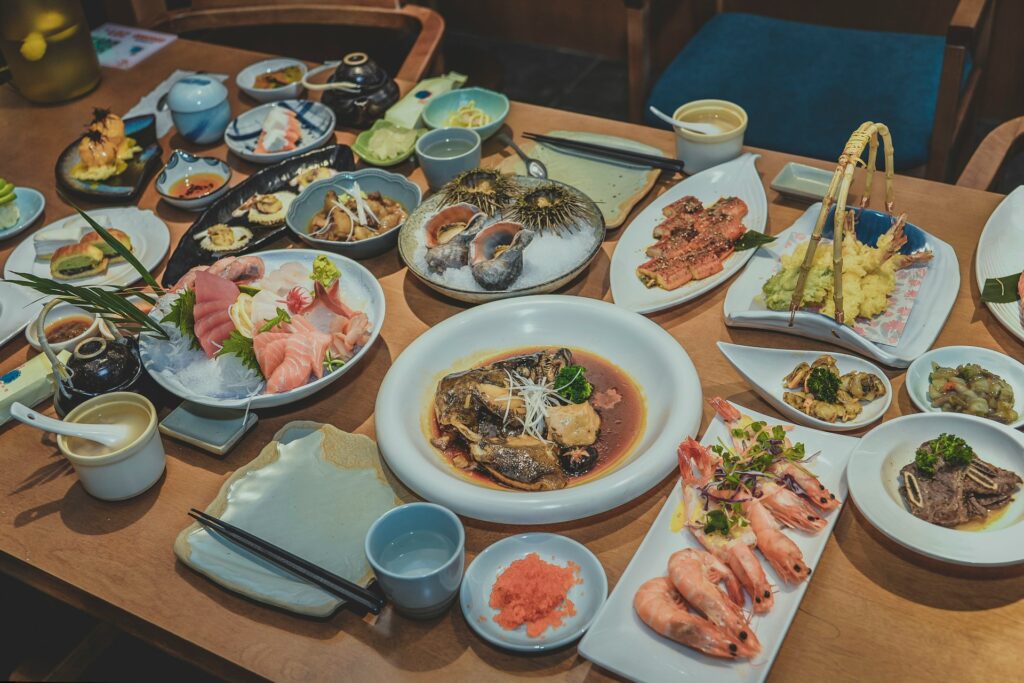
The delicate character of sushi and sashimi pair beautifully lighter, floral whisky. The subtle sweetness and acidity of the seafood marry well with the whisky’s smoothness. Moreover, the clean taste of Japanese whisky can complement the nuances of raw fish.
When pairing whisky with sashimi, it’s important to consider the specific type of sashimi and the profile of the whisky to ensure they complement each other. For instance, a lightly peated whisky might pair well with the oily richness of salmon, while a fruitier whisky could better complement white fish. Coastal Japanese whiskies often have a slight saline character that can pair nicely with seafood.
- Miyagikyo Single Malt – Produced by Nikka Whisky, located in the northern part of Honshu, this whisky has a gentle fruitiness with a slight coastal influence that can complement the flavours of sushi and sashimi without overpowering them.
- Chichibu On The Way – Chichibu distillery is not exactly on the coast, but it’s relatively close to the ocean compared to other Japanese distilleries. Their whiskies often have a subtle maritime note, and “On The Way” is a complex, slightly peated whisky that could add an interesting dimension to the meal.
- Fuji Japanese Whisky – Japanese whiskies like Fuji are often characterised by their smoothness and subtle profiles, which can include floral notes, fruitiness, and a slight smokiness. These flavours can complement the delicate taste of sashimi without overpowering it. Fuji, which has a clean and crisp finish, can cleanse the palate between bites of sashimi, enhancing the enjoyment of the dish’s fresh flavours.
Edamame
Ideal with Chita Single Grain and Hakushu 12 Year Old…
The saltiness of these soybeans can be a nice contrast to the sweetness of some Japanese whiskies. Edamame, which are young soybeans typically steamed and lightly salted, have a subtle, slightly nutty, and sweet flavour with a hint of earthiness
- Chita Single Grain: This whisky is lighter and sweeter, with hints of honey and cardamom, which can pair nicely with the subtle sweetness of edamame.
- Hakushu 12 Year Old: This whisky is known for its fresh, green, and lightly smoky notes, which can complement the green and earthy taste of edamame.
Fried Lotus Root
Ideal with Suntory whisky, Yamazaki 12 Year Old and Hakushu 12 Year Old…
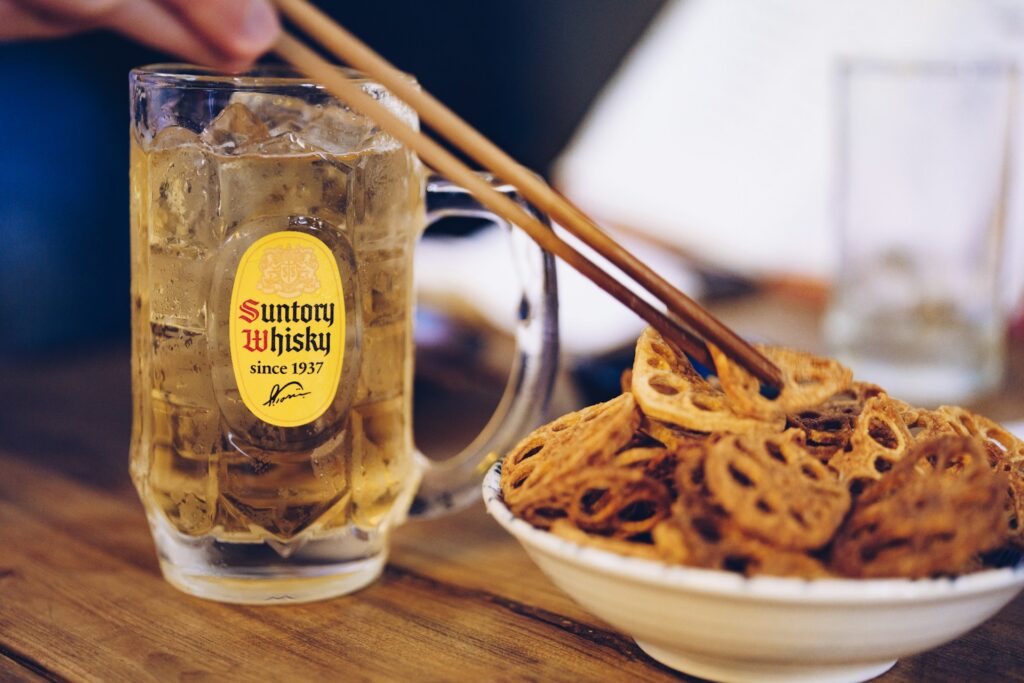
When it comes to pairing Japanese whisky with a snack like fried lotus root, which is essentially fried lotus root chips, you’ll want to consider the texture and flavour of the snack. Lotus root chips are known for their crispy texture and slightly sweet, nutty flavour, which can be seasoned in various ways.
- Suntory Whisky: A lighter Suntory whisky, perhaps one with floral or fruity notes, could complement the delicate sweetness of the lotus root without overpowering it. On the other hand, if the lotus root is seasoned with stronger spices or accompanying flavours, you might opt for a whisky with a bit more body or smokiness to stand up to those flavours.
- Hakushu 12 Year Old: If your lotus root chips are seasoned with a bit of spice or herbs, the Hakushu with its fresh, lightly peated, and herbal notes could provide a refreshing contrast. It has a crisp and green profile with hints of mint, melon, and cucumber, which can be a nice palate cleanser between bites.
- Yamazaki 12 Year Old: This is a single malt whisky with a fruity and slightly sweet profile, with notes of peach, pineapple, grapefruit, clove, candied orange, vanilla, and Mizunara (Japanese oak). The sweetness and fruitiness can complement the nutty and earthy flavours of the lotus root chips.
Grilled Meats
Ideal with Yamazaki 12 Year Old and Nikka Taketsuru Pure Malt…

Yakitori or other grilled meats with a smoky char can be paired with a peatier whisky. The smoky notes of the whisky echo the charred flavours of the meat, creating a harmonious taste experience. If pairing with pork look for a whisky that has a strong orchard fruit-like character.
- Yamazaki 12 Year Old: This is a single malt whisky with a fruity and slightly smoky profile. It has notes of peach, pineapple, grapefruit, clove, candied orange, vanilla, and Mizunara (Japanese oak). This whisky could pair well with grilled chicken or pork that has a slight char but is not overly seasoned.
- Nikka Taketsuru Pure Malt: This is a blended malt whisky with a balanced profile that includes fruit, nuts, and a hint of smoke. It’s versatile enough to pair with a variety of grilled meats, including beef, pork, and game.
Chocolate
Ideal with Hibiki Harmony, Nikka Coffey Grain and Yamazaki 12 Year Old…
Dark chocolate, with its bitter and sweet profile, can be a divine match for whisky with notes of caramel and vanilla. The whisky’s depth complements the intensity of the chocolate, resulting in a luxurious pairing.
- Nikka Coffey Grain: This whisky is on the sweeter side, with vanilla and tropical fruit notes. It can be paired with white chocolate or chocolate that includes fruits like orange or coconut (bounty anyone?) to enhance the tropical notes.
- Hibiki Harmony: Known for its floral and honey notes, Hibiki Harmony can be paired with milk chocolate or chocolate that has a creamy, soft filling. The smoothness of the chocolate will match the elegance of the whisky.
- Yamazaki 12 Year Old: This whisky has a fruity sweetness with a touch of spice and smoke. It pairs well with dark chocolate which has a slightly higher cocoa content, around 60-70%. The bitterness of the chocolate can complement the sweetness and fruitiness of the whisky.
Seasonal Fruits
Ideal with Hakushu Heavily Peated, Miyagikyo Single Malt, Chita Single Grain Whisky and Yoichi Single Malt…
For a lighter accompaniment, seasonal fruits can provide a refreshing contrast to the whisky’s richness. When pairing whisky with fruit, you generally want to match the intensity and flavour profile of the whisky with the type of fruit you’re enjoying.
- Hakushu Heavily Peated: The smokiness of this whisky could complement the sweetness of grilled pineapple or the tartness of blackberries.
- Miyagikyo Single Malt: Offering fruity and floral notes with a touch of sherry cask sweetness, it might go well with berries or tropical fruits.
- Chita Single Grain Whisky: This whisky is known for its light and clean taste with hints of mint and honey. It pairs well with melon or citrus fruits.
- Yoichi Single Malt: With its rich, peaty, and slightly spicy profile, it could pair well with dried fruits like raisins or figs, or even with a fruitcake.
The Bottom Line
Japanese whisky is a testament to the finesse and precision of Japan’s distilling heritage. Whether you’re a seasoned aficionado or a curious newcomer, there’s a style and a serving method to suit your palate. And when it comes to pairings, the key is to experiment and discover the combinations that delight your taste buds. So pour yourself a dram, raise your glass, and kanpai to the exquisite world of Japanese whisky.





